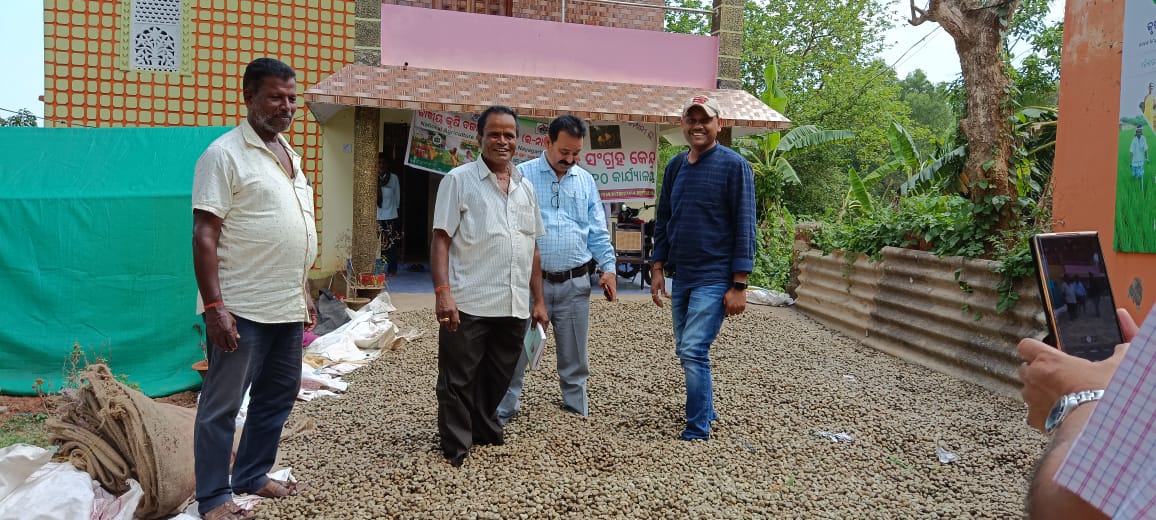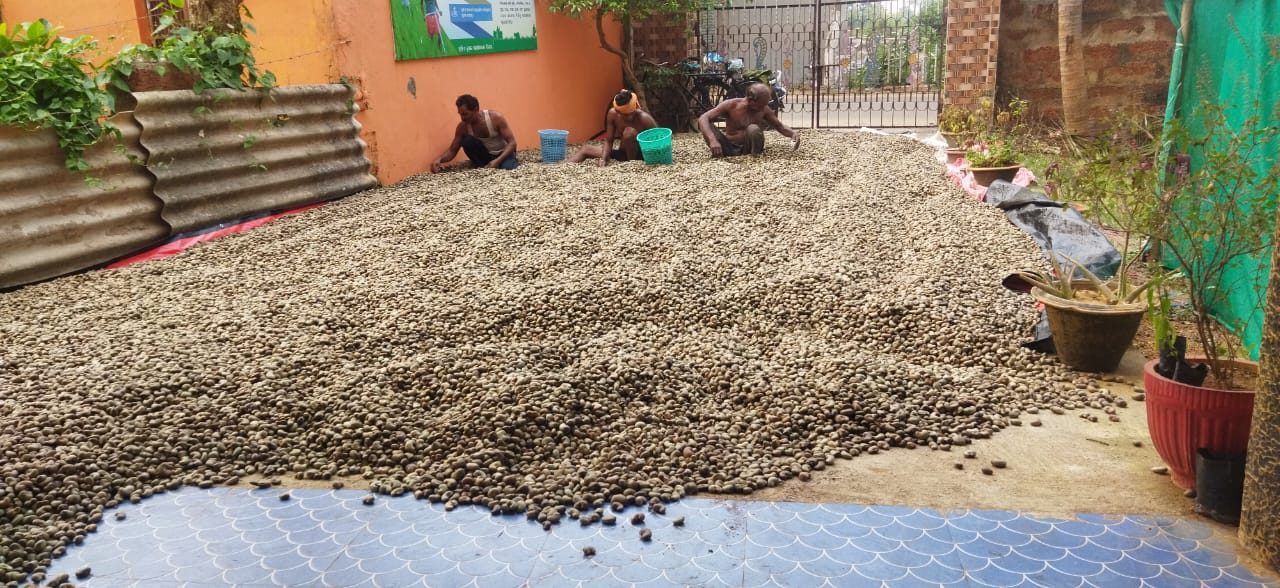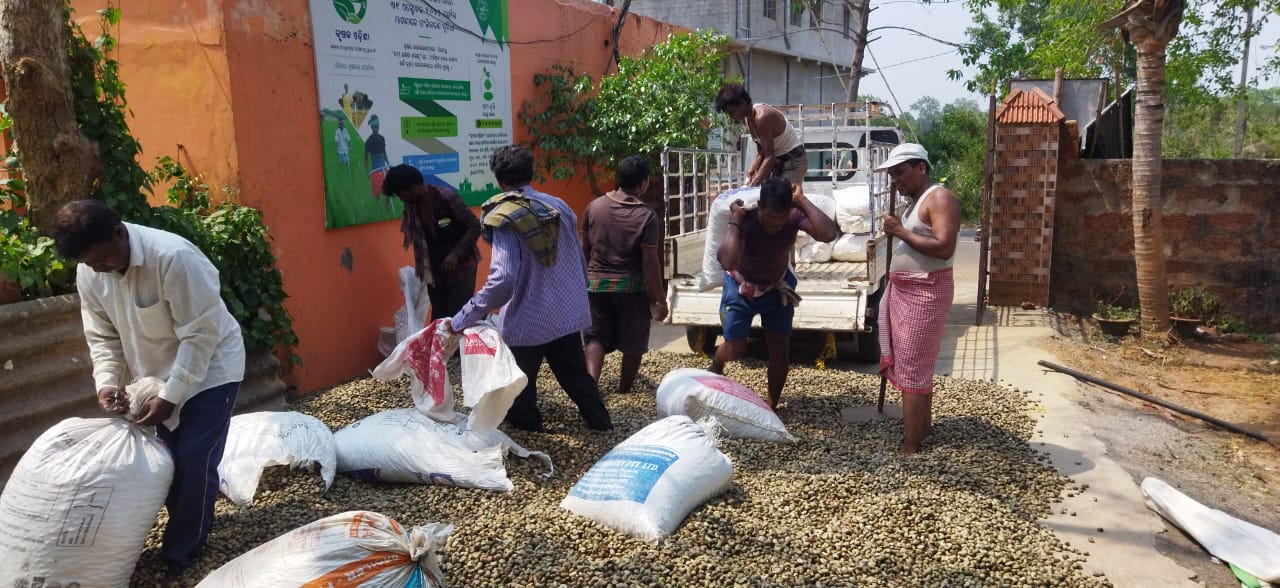
With a limited growing season spanning April through June, cashew is a high-value crop in India. The tree nut has the potential to earn farmers INR 100 per kg—compared to standard vegetables, which only bring in INR 20 per kg.
Farmers in the state of Odisha are well aware of cashew’s income potential: Every year, they harvest the raw cashew nuts, dry them and sell them to local traders. With no direct access to processors, however, farmers get exploited by these middlemen, who often lowball on price and may even cheat on the weight.
This year, the Promotion and Stabilization of Farmer Producer Organizations (PSFPO) project—being implemented by Tanager in the state of Odisha—developed a multipronged strategy to help farmers cash in on cashew. The project implemented the strategy with two lighthouse Farmer Producer Organizations (FPOs), Gopalpur in the Nayagarh District and Taptapani in the Gajapati District.
Processor connection
The PSFPO project had already successfully implemented a hub-and-spoke distribution model whereby FPOs collected farmers’ crops closer to their fields and took on the task of delivering products to market. They applied it to cashew.
Because good data feeds good decision-making, Tanager applied an extensive formula to collect farmer data. This ensured each FPO could accurately gauge the number of villages supplying cashew, the volume expected and the most convenient locations for collection centers. And, to ensure neither vegetable nor cashew aggregation and distribution would be neglected, it increased the number of marketing officers and community resource persons overseeing the cashew spokes.
Next, Tanager located a large cashew processor in the village of Ramba. This area boasts several cashew processors and is logistically equidistant from Gopalpur and Taptapani FPOs. Tanager helped the FPOs sign an MOU with the processor and arranged a one-day exposure visit, where key staff from each of the FPOs toured the center and trained on quality control measures. FPO members were taught to use a moisture meter—provided by Tanager—to check for the acceptable percentage of moisture. They learned to check the count—the number of cashews per kg—with the explanation that the lesser the count, the better, for it meant the cashews were larger in size. They also learned how to calculate the outturn, the weight of the kernel inside the nut. This would be obtained by cutting the nut with cutters—also provided by Tanager.
Finally, Tanager helped the FPOs access working capital through linkages with local financial institutions. This allowed FPOs to provide spot payments when buying cashew from its farmer members.
100 metric tons, 7 percent margins
The implementation of this strategy has made a palpable difference this season. Last year, farmers from these villages were forecast to harvest 40 metric tons of cashew—but were only able to sell 4 metric tons of raw cashew nut. Their profit margin: 3 percent.
In contrast, FPOs sold 100 metric tons of raw cashew nut directly to a processor in just the first 30 days of the season this year. Already farmers have realized profit margins that are 7 percent higher than last year. Two percent comes from the FPOs’ direct connection to the processor; the other 5 percent, from the accurate weighing of the product.

Jamshiv Jena, a member of Gopalpur FPO, owns a 3-acre cashew orchard. He notes how farmers in the FPO used have to sell their raw cashew nut to local traders, as there was no access to processors. “In the current season, I have direct linkages with a big processor, through my FPO,” he shared. “The price was high, and payment was on the spot. There is no cheating on the [crop] weight. We also received training on quality control mechanisms, which helps in getting a higher price. Many farmers like me have benefited.”
The FPOs, for their part, have realised a revenue of INR 1 CR, with a net margin of 2 percent after accounting for all expenses. The FPOs expect to sell more than 300 metric tons of raw cashew nut by the end of the season.
Next up: cashew apple juice, perhaps. Currently, the cashew apple, which is attached to the raw cashew nut, is thrown away as waste. There may, however, be the potential for additional income through the processing of cashew apple juice.


